Genre: Strategy Developer: Koei Publisher: Koei Players: 1 Released: 1995
As far as scarcity goes, Gekijoban Sangokushi IV is, alongside with DarXide, Spider-Man: Web of Fire and the fabled PAL release of Primal Rage, one of the most sought after and rarest four collectible games on the 32X. Fully boxed copies easily fetch prices of about $200 or more among collectors. The scarcity is explained by the fact that Sangokushi IV is the only 32x title that was exclusive to Japan and never brought stateside. This is a bit odd, considering that the English translation of the game, better known to western audiences as Romance of the Three Kingdoms IV: Wall of Fire, saw several ports to different consoles and computers, among them Windows 3.11 PCs, the SNES, Sega Saturn and the Sony PlayStation. The denial of a translation can only be attributed to the lack of success the Genesis add-on had.
Sangokushi IV is another installment of the Romance of the Three Kingdoms line of historic strategy games made by KOEI. Its two predecessors, RTK II and RTK III: Dragon of Destiny, were ported to the Sega Genesis, where they received complete English translations. The 32X version, however, is only available in Japanese. Given the huge amounts of text, the rather complex menu system and literally hundreds of different characters that may or may not be related to one another, the language barrier can prove to be quite a problem. Thankfully, with the help of the fully translated SNES port (which isn’t different from the 32X rendition in terms of gameplay) and the manual of the Sega Saturn version (which shares the same button layout on the controller), I was able to play through the game for an adequate review. Since much of my experience is drawn through direct comparison with those two other editions, I may make a few side-by-side comparisons as well this time around.
Like its predecessors, Sangokushi IV is based on the Chinese novel Romance of the Three Kingdoms as well as the historic text History of the Three Kingdoms. Picking one out of 32 available rulers or after creating your own character, your goal is to become emperor of China by conquering all of its 43 cities and crushing your competition on the way. Loyalty, honor, betrayal, and cowardice will accompany you on your entire journey… and of course, war!
First interjection of version differences here: Each port of the game has its own cinematic introduction sequence. The Saturn version sports a short intro movie filmed with real actors, which is pretty well done, especially in regard to the costumes. The SNES port has a bit of animated sequence done in a very beautiful art style, that conveys the atmosphere pretty nicely without resorting to lengthy narration. The 32x, unfortunately, uses exactly that. In front of several still images of different scenery, the background to the game is explained in walls of Japanese text, with the introductions of the individual rulers with their character portraits. While it helps to explain what is going on, it lacks the epic feel the other console ports have. People without any knowledge of Japanese will be completely lost here.
Similar to the previous games in the serious, you can pick one of the pre-existing rulers in the game or create your own character. You can also create new officers and inject them into the already huge mass (way over 100!) of already existing ones in the game. Once you’ve done that, you get to select in which of the six available time periods you wish to play your game in (side note: the Sega Saturn version of this game, along with the PSX and Dreamcast editions, have three additional scenarios to choose from, for a total of nine). Each of these starts with its own set of available rulers (ranging from 17 in the earliest to only three in the later periods), who all have different starting conditions, depending on the era you play in. You can either opt for an easier game by choosing a strong leader in one of the later time periods (like choosing Cao Pi in “221 AD: Birth of the Three Kingdoms”) or have a tougher game by entering as a comparatively weak lord and duke it out with many opponents in one of the early scenarios (for example by picking Kong Rong in “194 AD: Turmoil Spreads in China,” who only has one city and no generals by his side in the beginning). If you like a more dramatic unfolding of events and dealing with lots of intrigue and politics, pick one of the earlier options. If you’d rather jump right to the strategic warfare and prefer lots of battle, the last two stages are more your cup of tea.
In each scenario you may pick up to eight rulers, so you could in theory play with eight players taking turns at the controller. This shares the same problem with the earlier games in the series that unless two chosen rulers interact directly with one another, the players who have to wait their turn have basically look away from the screen in order not to spoil the game for them. If you created your own ruler, you get to choose one of the (still) free cities from which to start your conquest. Choosing the right starting city is also of strategic value; a small backwater town may be farther away from potentially conquering enemies, but it also takes longer to get anywhere while your enemies have more time to spread out.
The graphics in this game have been tremendously improved over previous installments. Mountain ranges have a lot more detail to them, the whole world map as well as the battle areas don’t look as flat anymore. (Side-by-Side comparison time again: On the SNES version, the world map uses a Mode 7-supported POV, zooming across the landscape if you want to have a look at the different regions. Personally, I prefer the more detailed optics of the 32X over the nifty, but very pixelated zooming effects the SNES has to offer). The sound has also been improved in that there is now a slightly bigger variety of different tunes. So aurally, the game has now more diversity than RTK III had. On the other hand, I liked some of the tunes the earlier game had to offer better than most of the music in Sangokushi IV, though that may be just my personal preference. It’s still a good soundtrack though, even if over time the music will get repetitive due to the immense length of the game.
The gameplay itself is similar to its predecessors: You have to govern your cities by keeping an eye on various stats, appointing governors and advisers, and you need to wage war by hiring new soldiers, appointing capable generals, and conquering territories. Thankfully, the process of leading your army (and individual units) into fights has been improved a bit. Battles can still take quite a lot of time though, especially in the later stages of the game, where each side commands bigger armies. Officers have now gained a few new extra abilities, however, that add a certain strategic value to the fights. Some have even gained supernatural powers, like being able to influence the wind or the weather during battle or even strike down enemies with lightning bolts, among other things. This certainly spices things up a bit during prolonged battles.
Politics are still an important part of the game, now probably even more than before. Espionage, bribery and treachery come into play, as do diplomacy and strategic alliances. There are also a larger number of random occurrences you have to keep an eye on. Rumors of a huge army traveling towards you may send your soldiers into panic and hurt their morale. Also, be careful who you talk to in the game. When a person approaches you and offers his services as a general for example, you better not only judge him by his stats, but also by his family name: If he’s a relative of another ruler active in your game, he is pretty likely to betray you later on. The level of treachery and intrigues has definitely been kicked up a notch in this game when compared to earlier releases. You even need to be careful when someone offers you a tribute. If there’s a plague going around in some parts of the country, and an apparently free ruler of a city wants to give you blankets, you might consider declining that. If he’s secretly working for your enemies, this tribute might really be a plan to carry the plague into your cities.
This may give you an impression of the scale and depth the game operates on. Apropos plague: There is a pretty high number of random encounters, mostly bad (like typhoons, swarms of locusts, rebellions, or the aforementioned epidemic), with one beneficial one (a particularly rich crop). These befall certain regions every once in a while, so it pays to keep an eye on the going-ons. Develop your cities to avoid damage from typhoons. If a region has been struck by locusts, you might try getting its leader on your side by offering food or raze the starved citizenship into the ground with a surprise attack.
While the predecessor RTK III: DoD also had a certain level of politics in play, most of the time the successful main strategy always leads to raising a huge army and running everything into the ground with a lot of micromanagement in between. Here, the game is more balanced between the different options. Armchair emperors may even try conquering their lands from their throne room by employing a vast network of alliances, trickery and intrigues, thus weakening your enemy’s forces and easily capturing their provinces. Of course, taking enemy cities by force and razing everything in your way with a huge army still holds its own charm. There are still huge amounts of stats and options to keep in mind, though. You constantly need to check on people, provinces and current news, deal with training your forces, famines in your provinces, developing your cities and dealing with your opponents and their henchmen.
Sangokushi IV, aka Romance of the three Kingdoms IV: Wall of Fire, is a highly complex strategy game that heavily improves on the formula of its predecessors. It’s a great and engaging game for genre enthusiasts. The different constellations in each scenario and the various tactics you can employ help to make every playthrough a different experience and allows for almost countless amount of challenge. That being said, the high amount of micromanagement and the multitude of options may only appeal to hardcore strategy gamers, as the experience may seem daunting for casual players.
If you feel up for the challenge and enjoy engaging in complex and rather epic strategy games, Sangokushi IV may be right up your alley… IF you’re fluent in Japanese, that is! The high number of stats, hundreds of character and city names, random encounters and a very complex, though atmospheric, diplomacy and intrigue system makes the game completely unplayable if you can’t understand the language. Shelling out around $200 for a used copy of the game may only be advisable if you’re a hardcore collector aiming for owning every single 32X game in existence. If you want to play the game, you’re better served picking up any of the other releases instead. Luckily, Sega fans can grab the Saturn or Dreamcast versions, which have been completely translated into English and also offer three additional scenarios.
SCORE: 8 out of 10

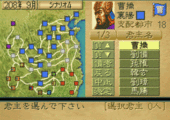
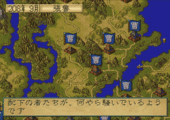
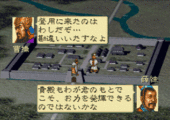
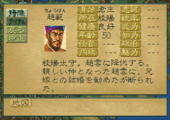
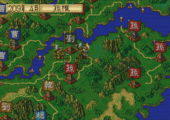
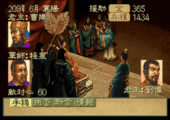
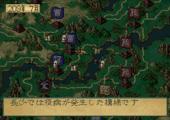
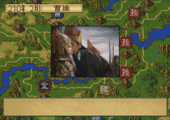
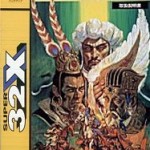
Recent Comments